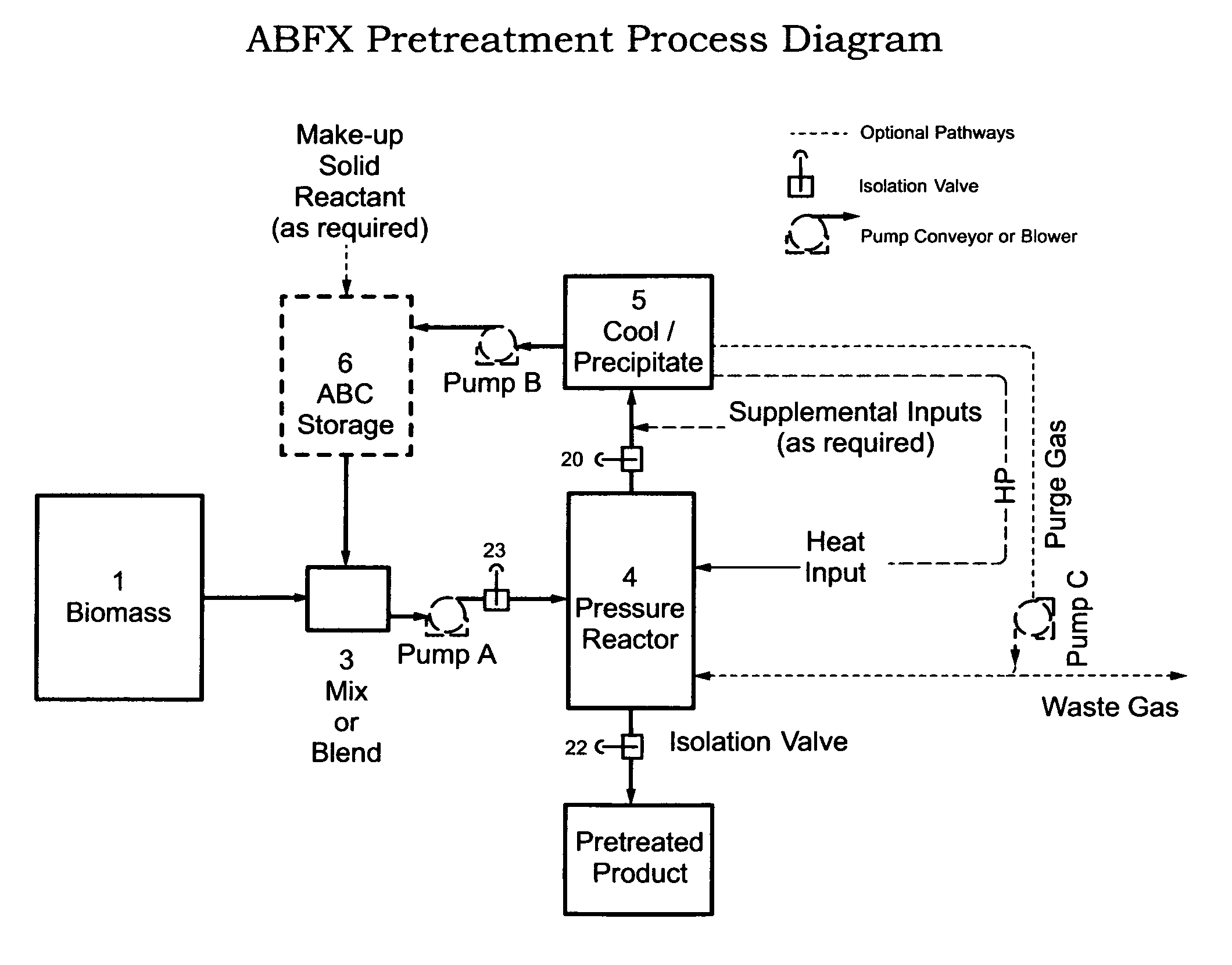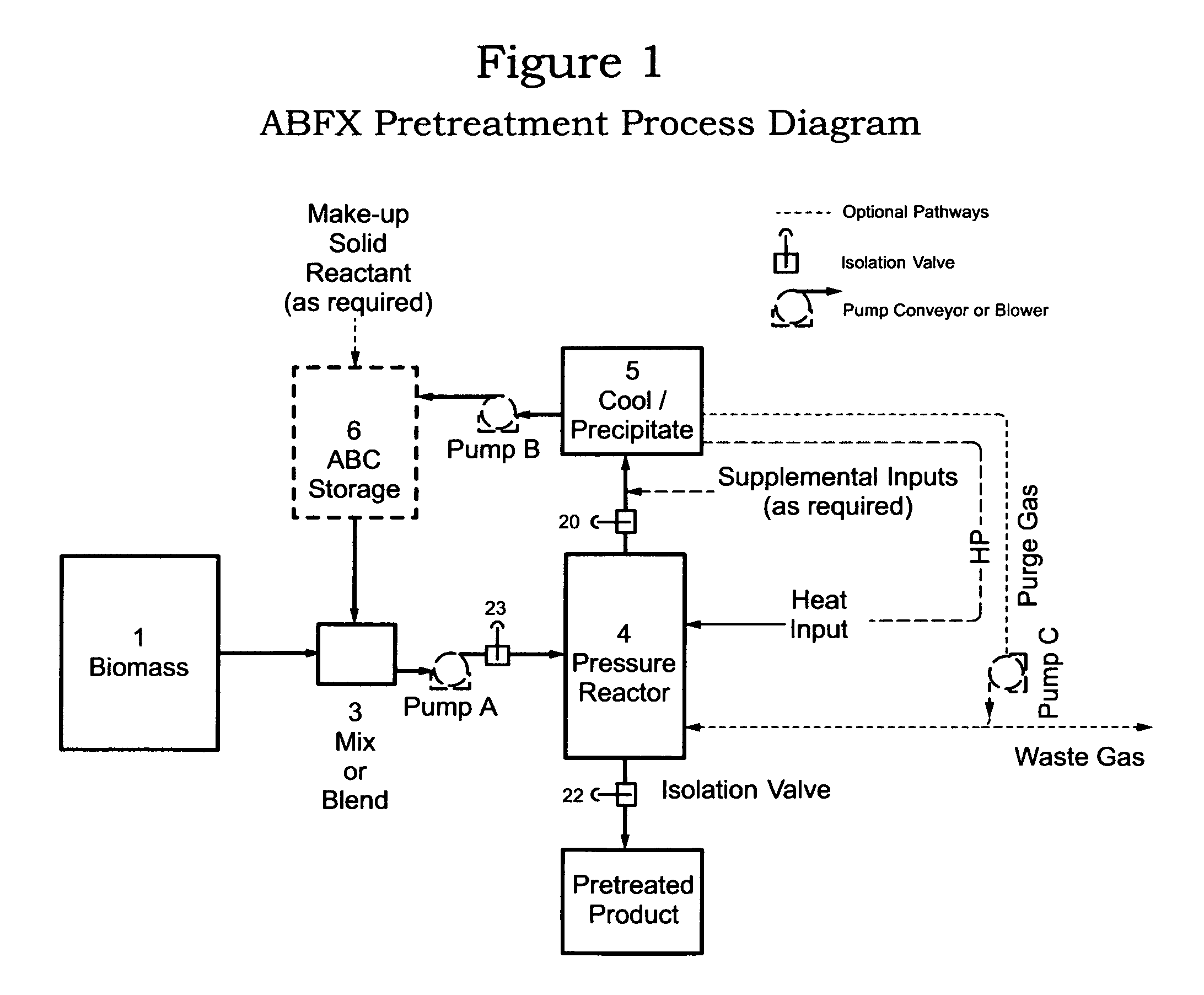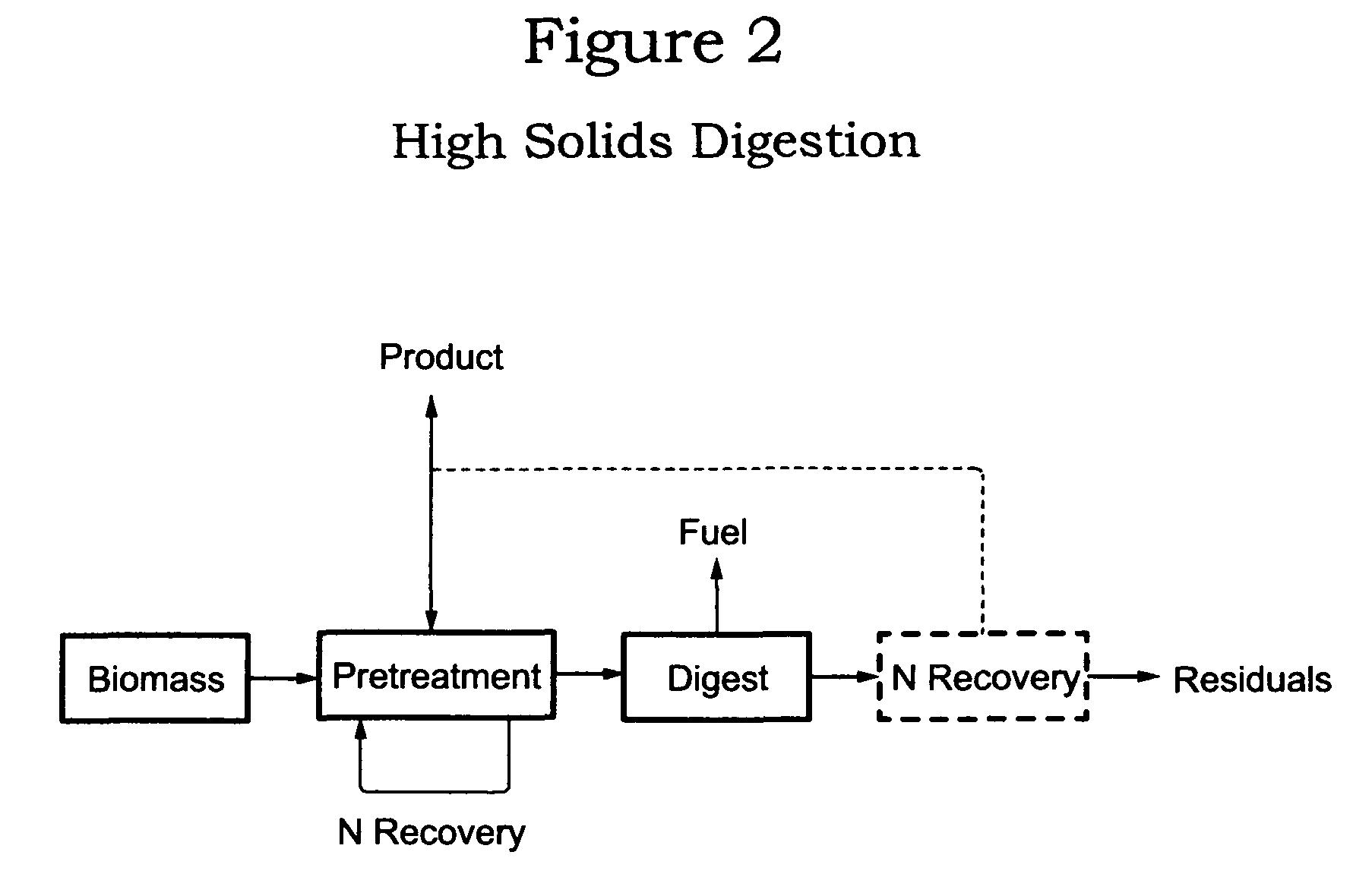Biomass pretreatment with ammonium bicarbonate / carbonate expansion process
- Summary
- Abstract
- Description
- Claims
- Application Information
AI Technical Summary
Benefits of technology
Problems solved by technology
Method used
Image
Examples
Embodiment Construction
[0045]The object of this invention is to present an economical and efficient pretreatment process for a variety of substrates and biofuel processes. FIG. 1 presents a schematic diagram of the pretreatment process. The biomass 1 can be derived from a variety of plant and waste products as well as biofuel processes. The pretreatment process can be incorporated into high solids anaerobic digestion facilities, conventional anaerobic digestion facilities, and the digestion of residual solids resulting from other digestion or fermentation processes. The integration of the pretreatment process into those biofuel processes is presented in FIGS. 2-5, discussed below.
[0046]The biomass 1 can be macerated, ensilaged, or dried prior to pretreatment to store or improve the treatment process. A variety of preprocessing technologies may be beneficially utilized. The stored and / or preprocessed biomass 1 is then mixed and / or blended with ammonium bicarbonate and / or ammonium carbonate at any desired f...
PUM
| Property | Measurement | Unit |
|---|---|---|
| Temperature | aaaaa | aaaaa |
| Pressure | aaaaa | aaaaa |
| Heat | aaaaa | aaaaa |
Abstract
Description
Claims
Application Information
 Login to View More
Login to View More - R&D
- Intellectual Property
- Life Sciences
- Materials
- Tech Scout
- Unparalleled Data Quality
- Higher Quality Content
- 60% Fewer Hallucinations
Browse by: Latest US Patents, China's latest patents, Technical Efficacy Thesaurus, Application Domain, Technology Topic, Popular Technical Reports.
© 2025 PatSnap. All rights reserved.Legal|Privacy policy|Modern Slavery Act Transparency Statement|Sitemap|About US| Contact US: help@patsnap.com



